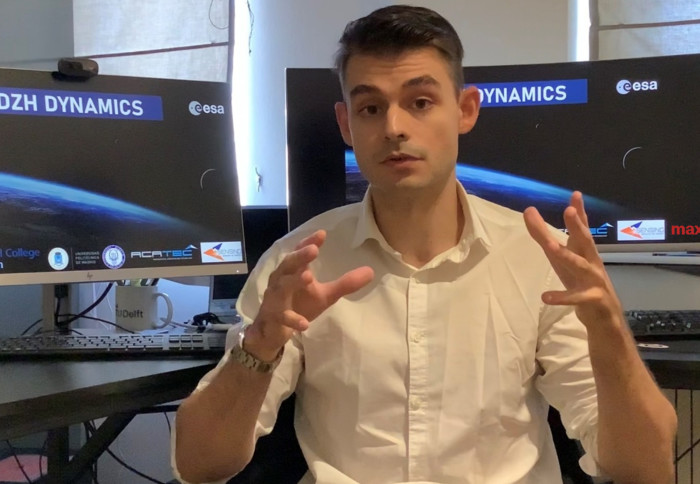Aero PhD student to have experiment performed in microgravity conditions
by Tom Creese

A team headed by an Aeronautics PhD student has been selected for the European Space Agency’s Fly Your Thesis! programme.
A panel of experts has selected DZH Dynamics as one of three teams to participate in a weightless flight campaign later this year.
This technology is particularly exciting because it has not been developed before and we intend for the research validation in microgravity conditions to be a stepping stone toward testing in space. Jesús Manuel Muñoz Tejeda PhD Student, Department of Aeronautics
ESA's Fly Your Thesis! programme presents students with a once in a lifetime opportunity to propose, design, build, test and fly their scientific experiment or technological research in microgravity conditions.
Jesús Manuel Muñoz Tejeda, a PhD student in Space Technology, is the Research Director and Technical Coordinator of DZH Dynamics, an international and multidisciplinary research group consisting of bachelor, masters and PhD students from other European universities and young professionals.
The project has also been endorsed by the Department of Aeronautics' Senior Lecturer in Spacecraft Engineering, Dr Aaron Knoll.
Controlling the Dzhanibekov effect
Since 2019, the team's research has investigated the development of enhanced attitude control methods (i.e. systems which control the orientation of a complete space vehicle or satellite). To achieve this, the group are combining reaction wheels with the Dzhanibekov (DZH) effect (demonstrated in the video below).
The DZH effect occurs when an object is spun. Since a rigid object has three main axes of rotation, in effect there are three different ways in which the object rotates. The object will be stable only near axes one and three but will be unstable around axis number two (also known as the intermediate axis).
Jesús explains “Once the object is given an initial spin around its intermediate axis of inertia, that angular speed helps to generate a periodic 180-degree flip. By shifting the object mass distribution in a certain way, we can control this effect, not only for experimental research purposes, but also for a real spacecraft in orbit."
The team have made a prototype which has a release mechanism (see video below). "This mechanism is in charge of the initial rotation and the release of the prototype when microgravity starts. After that, we will use our system to control the object and prove we can make different attitude changes, which will validate our research.”
By controlling these phenomena, the technology enables objects to perform fast attitude change manoeuvres while using less energy consumption. Conservative estimates suggest that the combined benefits of the DZH effect in space allow for manoeuvres that are up to 30% faster with up to 40% less energy consumption.
Jesús says the possibilities for this technology include achieving heat transfer within a spacecraft. “For example, if you have a spacecraft, and one of the sides is hot because it’s facing to the sun, and the other side is freezing because it doesn’t face the sun, then with a 180-degree attitude change, you can interchange the side that is hot and the side that is cold.”
Microgravity testing
Later this year, the technology will be tested aboard Novespace's Airbus A310. During this time, the team will experience a total of thirty minutes of microgravity throughout the whole duration of the parabolic flight campaign to test their experiment. Jesús admits the programme is demanding: “The experiment needs to be risk-free, and it needs to be proven. That’s why we need to prepare throughout the year to ensure everything works perfectly.”
Although the ESA FYT! campaign offers the opportunity for testing during parabolic flight, Jesús says that DZH Dynamics have ambitions to develop the technology to realise transformable spacecraft with full inertial control. “This technology is particularly exciting because it has not been developed before, and we intend for the research validation in microgravity conditions to be a stepping stone toward testing in space.”
You can find out more about the project on the DZH Dynamics website, and you can follow the team on LinkedIn, Instagram and YouTube.
Article text (excluding photos or graphics) © Imperial College London.
Photos and graphics subject to third party copyright used with permission or © Imperial College London.
Reporter
Tom Creese
Department of Aeronautics
